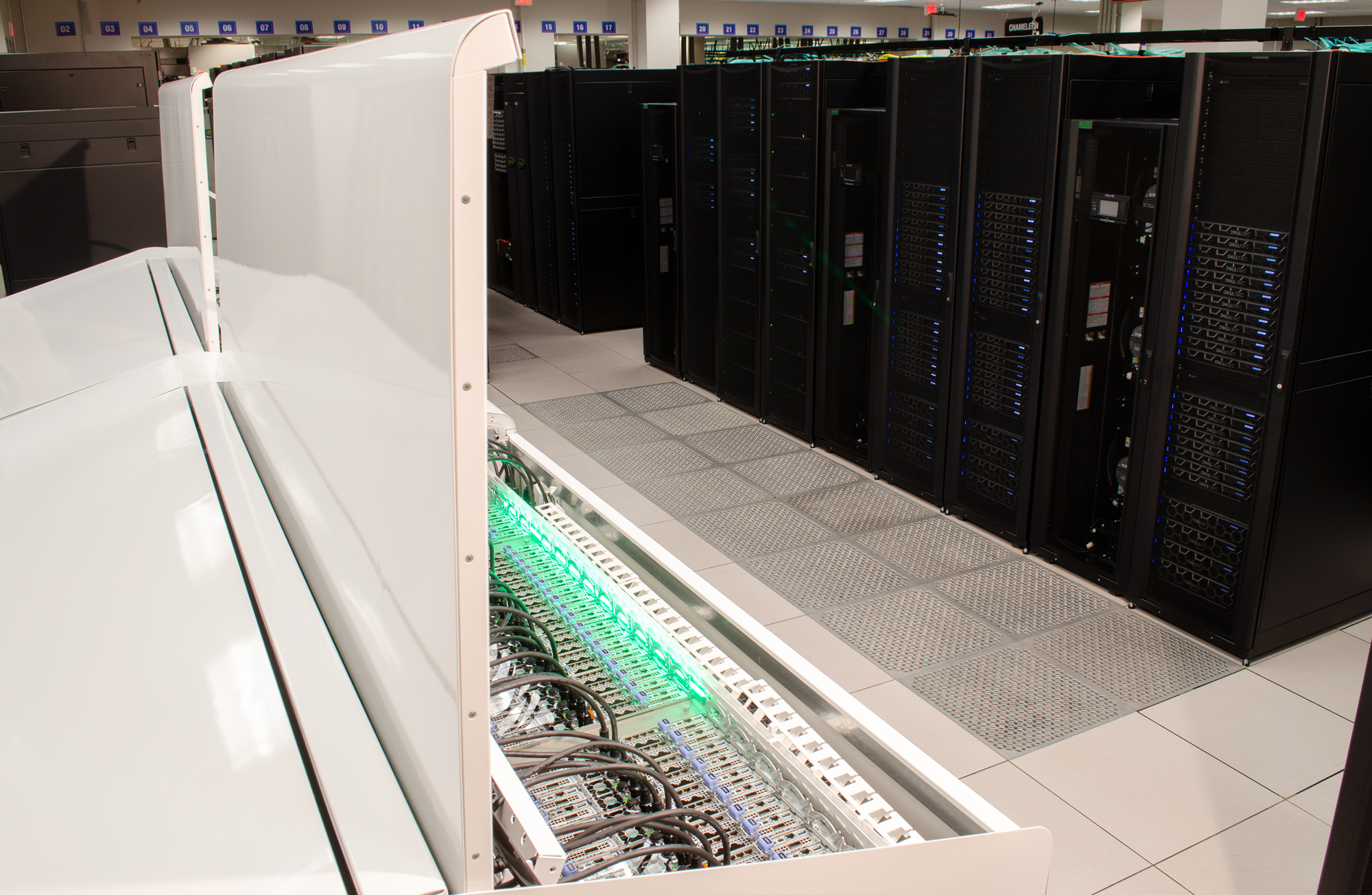For the past 20 years, the Texas Advanced Computing Center at the University of Texas at Austin has helped researchers push the boundaries of science and engineering. Drawing on the computational power of some of the nation’s biggest and fastest supercomputers, TACC has powered discovery after discovery — while jumping in to help with national emergencies.
A few examples:
- Astronomers used TACC systems to analyze data and confirm the Event Horizon Telescope’s first-ever image of a black hole.
- TACC supercomputers helped confirm the first observation of gravitational waves by detectors at the Laser Interferometer Gravitational-Wave Observatory (LIGO) — a discovery that opened a new window to the universe and led to a 2017 Nobel Prize in physics.
- TACC supported more than 50 COVID-19 research teams, leading to the first atomistic model of the SARS-CoV-2 virus and daily pandemic forecasts that continue to drive policy decisions.
- TACC produced urgent storm surge simulations for hurricanes in the Gulf of Mexico making landfall and guided first responders after the Deepwater Horizon oil spill.

This is the type of work done by the really bright minds who use the computing resources at TACC. Those resources include two of the most powerful university supercomputers in the United States — Frontera, the world’s 10th fastest supercomputer, and Stampede2, currently 35th on the list of the TOP500 supercomputers. Both systems were delivered by Dell Technologies.
This legacy of supercomputing leadership continues today as TACC rolls out its new Lonestar6 system from Dell Technologies and AMD. Lonestar6 is rated at 3 petaFLOPS, meaning it can perform roughly 3 quadrillion operations per second. TACC notes that to match what Lonestar6 will compute in just one second a person would have to do one calculation every second for 100 million years.
This new supercomputer has all the right stuff. It’s a hybrid system in that it’s part air-cooled and part liquid (oil) immersion cooled from Green Revolution Cooling (GRC) — for space and energy considerations in the data center. It has more than 800 Dell PowerEdge C6525 servers with 3rd Generation AMD EPYC™ processors that operate as one HPC system.
Lonestar6 will support the University of Texas Research Cyberinfrastructure’s initiatives, including COVID-19 research and drug discovery, hurricane modeling, wind energy and dark energy research. The Department of Energy Predictive Science Academic Alliance Program at UT Austin will also be supported by Lonestar6.
20 years of HPC
As it rolls out Lonestar6, TACC is simultaneously celebrating a major milestone — 20 years of putting the power of high performance computing into the hands of scientists, engineers, medical researchers and other users across the United States. And on Sept. 30, people from TACC and its longest partners — the National Science Foundation and Dell Technologies — gathered to celebrate this milestone. Read the news release.
At Dell Technologies, we’re proud to have partnered with TACC over the past 20 years, including work on the development of new Lonestar6 system. And we’re looking forward to the next 20 years, and those beyond, as researchers draw on the power of TACC systems to solve really big problems.
To learn more
For a closer look at TACC and how its HPC resources are helping researchers address urgent challenges — from the ongoing peril of climate change to the pandemic raging around us — visit tacc.utexas.edu.


